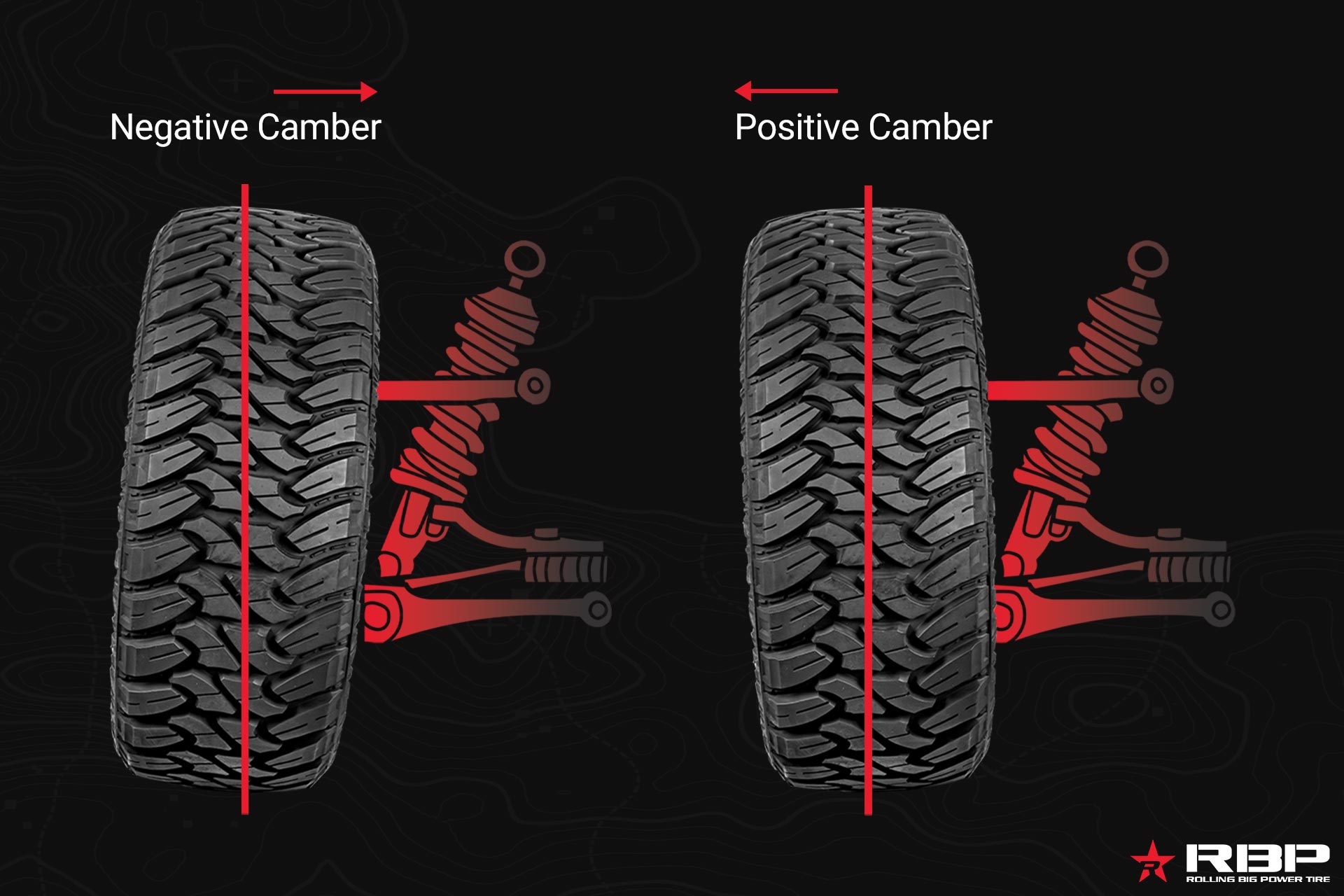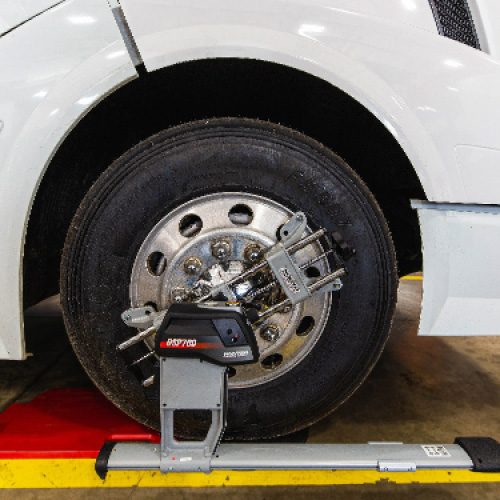A truck needs an alignment when it pulls to one side or the steering wheel vibrates. Misalignment can cause uneven tire wear and affect driving safety.
Maintaining your truck’s alignment is crucial for smooth driving. Poor alignment can lead to various issues that might go unnoticed at first. Over time, these problems can grow, making driving uncomfortable and unsafe. Knowing the signs of misalignment helps you address the issue early.
This ensures your truck stays in top condition and your driving experience remains pleasant. In this blog post, we will explore key indicators that your truck needs an alignment, why it’s important to fix them promptly, and how proper alignment benefits your vehicle in the long run. Keep reading to learn more and ensure your truck runs smoothly on the road.

Credit: www.otrfleetservice.com
Signs Of Misalignment
Signs of misalignment in your truck can lead to more than just an uncomfortable drive. They can result in costly repairs if not addressed promptly. Knowing these signs early can save you money and keep your truck running smoothly.
Uneven Tire Wear
Have you noticed your tires wearing out faster on one side? This can be a clear indicator of misalignment. Uneven tire wear means your truck’s wheels aren’t rolling in the same direction.
Check for bald spots or tire wear that isn’t consistent across all tires. If you find such patterns, it’s time to consider an alignment. This will ensure your tires last longer and perform better.
Steering Wheel Vibration
Do you feel a vibration in your steering wheel while driving? This can be more than just a minor annoyance. Steering wheel vibration often points to alignment issues.
If the vibration worsens at higher speeds, it’s an urgent sign. Getting a professional to check your alignment can prevent further damage and improve your driving experience.
Pulling To One Side
Is your truck pulling to one side even when you’re driving straight? This is a common sign of misalignment. Pulling to one side means your truck isn’t aligned correctly.
Try letting go of the steering wheel briefly on a straight road. If your truck veers to the left or right, it’s time for an alignment check. This will help keep you safe on the road.
Have you experienced any of these signs? Taking action now can prevent bigger problems later. Regular alignment checks are essential for truck maintenance and safety.

Credit: rbptires.com
Causes Of Misalignment
Is your truck pulling to one side? It might need an alignment. Misalignment can occur due to several factors. Understanding these causes can help you prevent damage and extend your truck’s life.
Hitting Potholes
Driving over potholes can lead to misalignment. The sudden impact shifts your truck’s wheels. This can cause uneven tire wear and poor handling. Even small potholes can create alignment issues over time.
Accidents And Collisions
Accidents and collisions often result in misalignment. The force from a collision impacts your truck’s suspension system. This can cause the wheels to go out of alignment. Even minor accidents can have significant effects.
Worn Suspension Parts
Suspension parts wear out over time. This wear can lead to misalignment. Common parts affected include ball joints, tie rods, and control arms. Regular maintenance can help catch these issues early.
Checking Tire Condition
Checking the condition of your tires is essential for truck maintenance. It helps you identify if your vehicle needs an alignment. Poor tire condition can lead to safety risks and costly repairs. Here’s how you can check your tire condition effectively.
Tread Depth Inspection
Examine your tire tread depth regularly. Treads help your truck grip the road. Worn-out treads can cause skidding, especially in wet conditions. Use a tread depth gauge for accuracy. Insert it into the grooves of your tire. If the tread depth is less than 1/16 inch, consider a tire replacement. Also, check for uneven tread wear. Uneven wear may indicate a need for alignment.
Tire Pressure Monitoring
Maintain the correct tire pressure. Incorrect pressure affects tire wear and fuel efficiency. Use a tire pressure gauge to check the pressure. Refer to your truck’s manual for the recommended levels. Under-inflated tires can cause the edges to wear out faster. Over-inflated tires can wear out the center. Both conditions can signal alignment issues. Regular monitoring helps maintain proper tire condition.
Steering Wheel Symptoms
Is your truck steering wheel acting strange? This might indicate an alignment issue. Identifying steering wheel symptoms can help determine if you need an alignment. Below are key signs to look out for.
Off-center Steering Wheel
One noticeable symptom is an off-center steering wheel. When driving straight, the wheel should be centered. If it’s tilted, your truck might need an alignment. This is a clear sign something is wrong.
Loose Or Tight Steering
Another symptom to watch for is loose or tight steering. Loose steering means you need to turn the wheel more than usual. Tight steering feels like you are fighting the wheel. Both conditions signal possible alignment issues.
Suspension And Alignment
Ensuring your truck is in top shape is crucial for a smooth and safe ride. One of the key aspects of vehicle maintenance is suspension and alignment. A properly aligned truck with a well-maintained suspension system not only improves driving comfort but also enhances the longevity of your tires and other components.
Role Of Suspension
The suspension system in your truck plays a vital role in how your vehicle handles the road. It absorbs the shocks from uneven surfaces, ensuring a smooth ride. But it does more than just comfort; it keeps your tires in contact with the road, which is essential for safety.
Imagine driving down a bumpy road without a good suspension system. You’d feel every bump and pothole, making the ride uncomfortable and potentially dangerous. The suspension system helps maintain control, especially during turns and sudden stops.
Impact Of Worn Components
Over time, the components of your suspension system can wear out. When this happens, your truck’s alignment can be thrown off. Even minor wear and tear can lead to significant alignment issues.
Have you noticed your truck pulling to one side? Or maybe the steering wheel isn’t centered when you’re driving straight? These are signs that your suspension components might be worn. Worn parts can cause uneven tire wear, reducing their lifespan and affecting your truck’s handling.
Think about the last time you hit a large pothole. Did you notice any changes in how your truck drives afterward? Such impacts can damage suspension components, leading to alignment problems. Regularly checking and replacing worn parts can prevent these issues.
Addressing these issues promptly can save you money in the long run. Replacing a few worn components now is often cheaper than dealing with extensive repairs later. Plus, it ensures your truck remains safe to drive.
So, when was the last time you had your truck’s suspension and alignment checked? If you can’t remember, it might be time to schedule an inspection. Your truck—and your wallet—will thank you.

Credit: equipmentexpertsinc.com
Importance Of Regular Alignment
Ensuring that your truck’s wheels are properly aligned is crucial for maintaining its performance and safety. Regular alignment checks can help you avoid unexpected expenses and keep your vehicle running smoothly. But why is it so important to get your truck’s alignment checked regularly?
Improving Fuel Efficiency
Did you know that misaligned wheels can cause your truck to consume more fuel? When your wheels are not aligned, your truck has to work harder to move forward. This increased resistance leads to higher fuel consumption.
Think about the last time you had to steer constantly just to keep your truck straight. That extra effort is not just tiring for you, but also taxing on your fuel tank. By ensuring your wheels are aligned, you can save money on gas and reduce your carbon footprint.
Enhancing Tire Longevity
Misalignment can lead to uneven tire wear, which means you might find yourself replacing your tires more often than necessary. Have you ever noticed one side of your tire wearing out faster than the other? That’s a clear sign of misalignment.
Proper alignment ensures that your tires wear evenly, extending their lifespan. This not only saves you money but also ensures your truck handles better on the road. Investing in regular alignments can lead to long-term savings and a smoother driving experience.
Next time you take your truck in for maintenance, ask yourself: When was the last time I had the alignment checked? Keeping up with this simple yet essential task can make a significant difference in your truck’s performance and longevity.
Professional Alignment Services
Notice uneven tire wear or your truck pulling to one side? These signs indicate your truck needs alignment. Regular professional alignment services ensure a smooth and safe driving experience.
Professional alignment services ensure your truck runs smoothly. A proper alignment can prevent unnecessary wear on tires. It enhances fuel efficiency and improves handling. Regular alignment checks keep your truck performing at its best.Finding A Trustworthy Mechanic
Finding a reliable mechanic is crucial. Ask friends and family for recommendations. Look for mechanics with good reviews online. Check for certifications and experience. A trustworthy mechanic will diagnose issues accurately. They will explain the alignment process clearly.What To Expect During Service
During the service, the mechanic will inspect your truck. They will check tire pressure and tread wear. They will measure the truck’s alignment angles. Adjustments are made to align the wheels properly. The mechanic will test drive the truck. This ensures everything is in order. Expect to receive a detailed report. This includes any recommendations for future maintenance. “`Diy Alignment Checks
Ensuring your truck’s alignment is crucial for a smooth ride. Regular checks can prevent uneven tire wear and improve driving safety. DIY alignment checks allow you to catch issues early, saving money and time.
Visual Inspection Techniques
Start by parking your truck on a level surface. Look at the tires from the front. Are they pointing straight ahead? If they angle inward or outward, your truck may need an alignment.
Next, check tire wear. Uneven wear often signals alignment problems. Compare the wear pattern on all tires. If one tire shows more wear than others, it could be an alignment issue.
Simple At-home Tests
Try the string test. Tie a string around each tire at the height of the axle. Measure the distance between the strings at the front and back of the tires. Differences in measurements indicate misalignment.
Another easy test is the steering wheel check. Drive your truck on a straight road. If the steering wheel is off-center, alignment might be needed. Also, if the truck pulls to one side, it’s a sign of misalignment.
Use a level to check the steering wheel position. Place the level on the steering wheel while parked. If the bubble isn’t centered, the alignment might be off.
Frequently Asked Questions
How Do I Know If My Truck Is Out Of Alignment?
Your truck may be out of alignment if it pulls to one side, tires wear unevenly, or steering wheel vibrates.
What Are The Symptoms Of A Car Out Of Alignment?
Symptoms of a car out of alignment include uneven tire wear, steering wheel off-center, pulling to one side, and vibrating steering wheel.
What Does It Feel Like When Your Truck Needs An Alignment?
Your truck may pull to one side, the steering wheel might vibrate, and tires could wear unevenly.
How Often Does A Truck Need An Alignment?
Trucks need an alignment every 25,000 to 30,000 miles. Regular alignment checks can prevent uneven tire wear and improve handling.
Conclusion
Knowing the signs of misalignment can save you time and money. Look for uneven tire wear, steering issues, or a drifting vehicle. Addressing alignment problems early ensures a smoother, safer ride. Regular checks can prevent bigger issues down the road.
Don’t ignore the signs; keep your truck in top shape. Stay safe and maintain your vehicle’s performance. Visit a professional if you notice any alignment symptoms. Proper alignment leads to better handling and fuel efficiency. Keep your truck running smoothly by staying alert to these signs.

